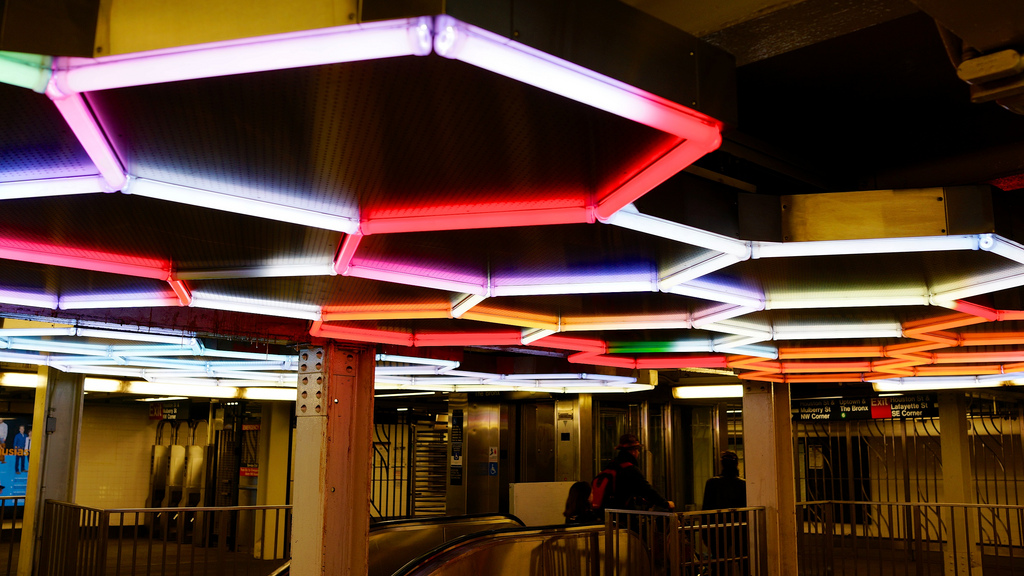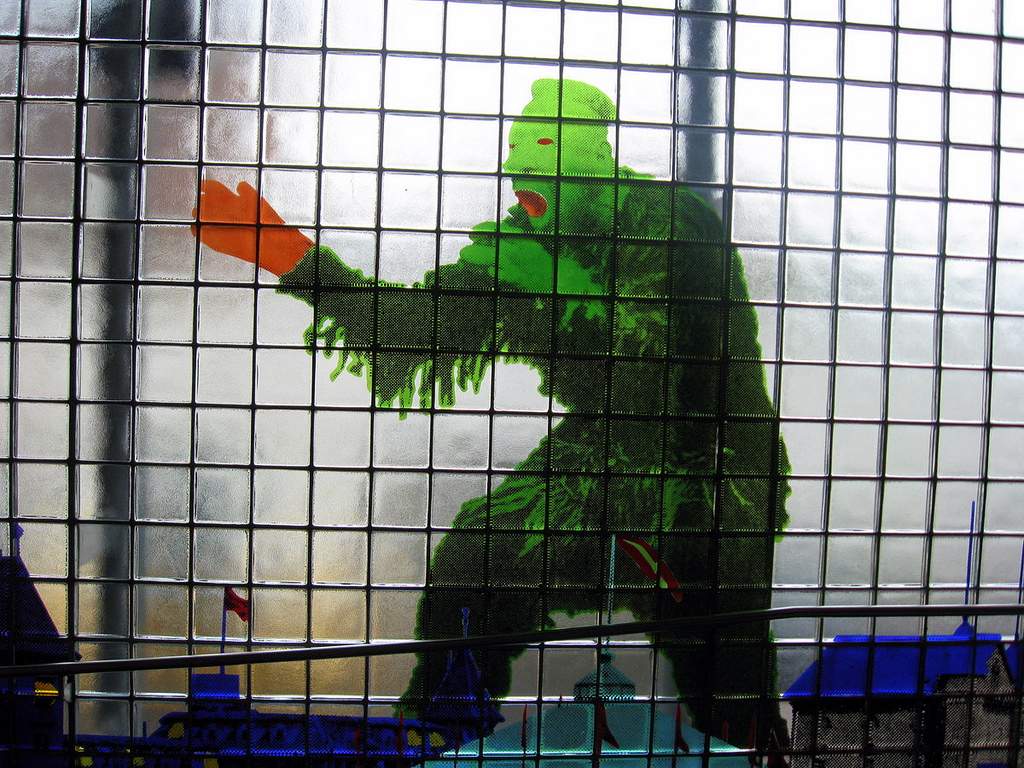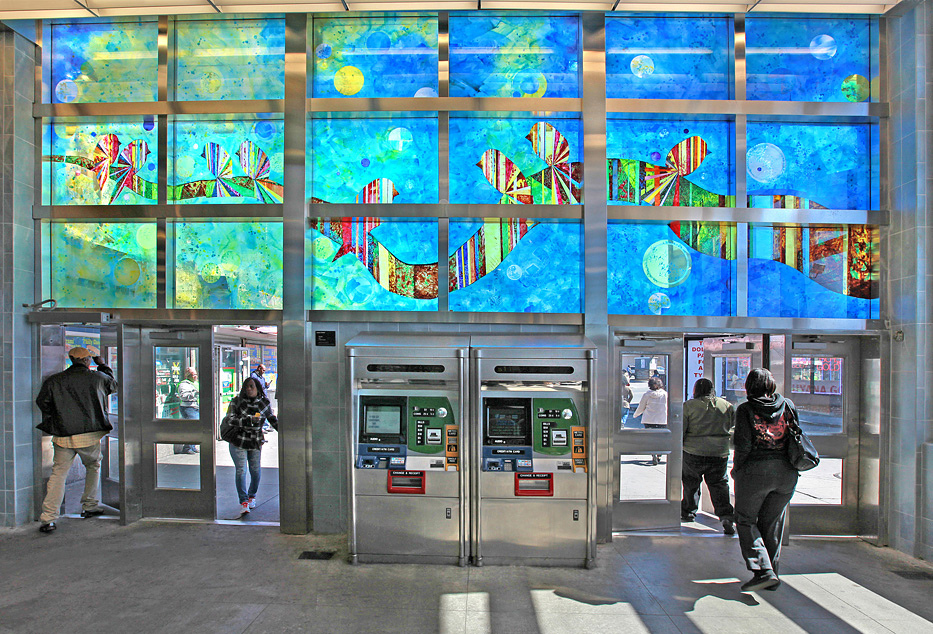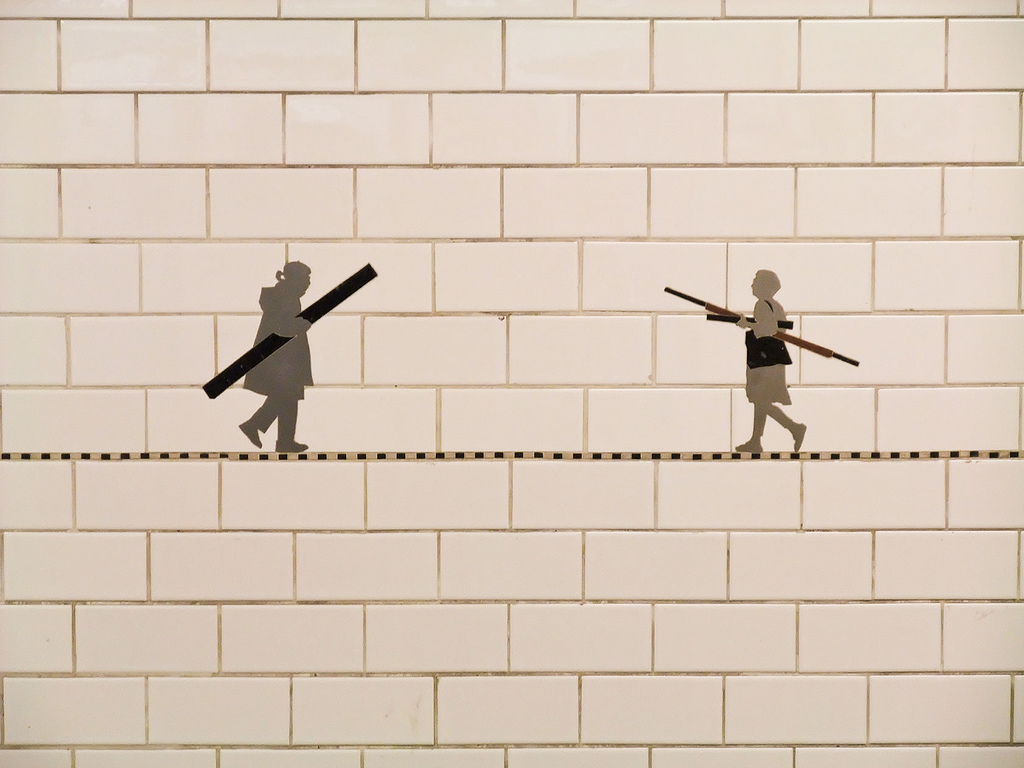Want to see some of New York City’s best art? Why bother with the museums when so much of it is available for just $2.50 (Editor’s Note: Now $2.90), underground, day or night? There are 267 works of art within the New York City subway system – and that’s just the MTA’s official count. While checking out all of them would likely exhaust even the most loyal subway rider (though it would certainly justify the cost of an unlimited MetroCard), we’ve selected the top five must-see subway art installations. Keep reading to see a bonus that any true New Yorker won’t want to miss.
Hive (Bleecker Street)
Artist and Location: Leo Villareal (6 at Bleecker Street / B/D/F/M Broadway-Lafayette Street, Manhattan).
This 2012 installation consists of a honeycomb of lights over the passageway between the 6 train and the B/D/F/M lines at Bleecker and Broadway-Lafayette. The rainbow of colors flickers and changes, creating patterns and the illusion of movement. This artistic experience is enjoyable for all ages, including children!
(Photo by Bit Boy)
My Coney Island Baby
Artist and Location: Robert Wilson (D at Coney Island-Stillwell Avenue, Brooklyn).
Debuting in 2004, this exhibit of Coney Island images silkscreened onto the glass walls of the station is a bold, beautiful bit of art from Wilson, who is known for his work in experimental theater. The pictures of a Nathan’s hot dog, the famous carousel, and more, seem to glow as the sunlight streams in through the glass. It’s not the only reason to go to Coney Island, for sure, but it definitely adds something unique to your trip.
(Photo by Steve Terrell)
Respite
Artist and Location: Jason Rohlf (A at Far Rockaway-Mott Avenue, Queens).
There’s at least one reason to venture to the last stop of the Queens-bound A train. A 2011 renovation of the station unveiled an incredible work of art by Jason Rohlf that encompasses the entire space. A brilliantly-colored set of glass panels depicting birds perched on branches, letting the light shine through, visible both inside and outside the station.
(Photo by MTAPhotos)
Masstransiscope
Artist and Location: Bill Brand (can be seen on board Manhattan-bound B and Q express trains just after Dekalb Avenue, Brooklyn).
Originally designed in 1980 in a now-abandoned Myrtle Avenue subway station in Brooklyn, in 2008 this exhibit was restored to make it visible out the windows of the express trains heading from Dekalb Avenue into Manhattan. Two hundred and twenty-eight panels rush past, creating the illusion of a moving image that twists and twirls. Of course, if your train is slowed by traffic, the twisting and twirling may happen more slowly than intended. This is a must-see, even if you don’t ride the train. You can watch the video on YouTube.
Carrying On
Artists & Location: By Janet Zweig and Edward Del Rosario (N/R at Prince Street, Manhattan).
This exhibit of almost 200 silhouettes of New Yorkers carrying “stuff” along the city streets, backpacks, trash bags, boxes, and more, debuted in 2004. The idea was that after 9/11, city life must carry on as usual, with the daily business of New Yorkers as alive as ever. Photographs of real New Yorkers inspired the steel and marble images. The dozens of images tell a story of a vibrant and busy city.
(Photo: Dan Deluca)
City Hall Station
Location: Abandoned at the end of the 6 train in Manhattan.
Ride the train past the Brooklyn Bridge stop to the turnaround in order to see the station, which was in use from 1904 to 1945. This preserved station can be seen either from the 6 train past the turnaround. Viewers can also occasionally catch a special tour through the New York Transit Museum. The station was, in its day, an elegant showpiece for the subway system. It also looked like a a mini-Grand Central with vaulted ceilings and beautiful chandeliers. Most New Yorkers born since the 1940s have never seen it, but by riding the 6 train past the final stop, you can take a glimpse into the city’s past.
(Photo: Paul Lowry)
For information about all 267 subway art installations, you can download the MTA’s free Arts for Transit app here, or check out the Arts for Transit.
Editor’s Note: We updated this article to enhance readability.









